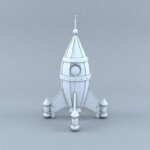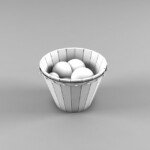Mysterious CNC machine operation: a basic guide to precise manufacturing
In today’s demanding manufacturing landscape, accuracy, efficiency and repeatability are not negotiable. The core of achieving these goals is computer numerical control (CNC) processing. For more than ten years, Greglight Gragenting The capabilities of advanced five-axis CNC technology have been leveraging the capabilities of advanced five-axis CNC technology to transform complex designs into tangible high-precision metal components. This guide breaks down the basic principles of CNC machine operation, allowing you to understand the process of delivering complex parts that drive the industry forward.
What exactly is CNC processing?
CNC machining is a subtraction manufacturing process, and pre-programmed computer software determines the movement of factory tools and machinery. It replaces manual operation with automated high-precision control, thus giving amazing accuracy and consistency of complex parts of various materials, especially metals. this "CNC controller" Read G code generated from 3D design (a standardized programming language) and convert it into precise commands for machine motors.
Core components of CNC machines
Understanding CNC machines involves understanding their key parts:
- Control unit (CNC controller): brain. It can interpret G-code and M-code instructions and send signals to servo motors or stepper motors.
- Machine/framework: A rigid structure is provided to handle cutting forces and maintain dimensional stability during operation. Construction strength directly affects accuracy.
- Motor (Servo/Step): Precisely control the movement and position of the machine shaft (X, Y, Z and rotation axes, such as A, B, C).
- Drive system: Converts motor rotation to linear motion along the machine axis (e.g., ball screws, linear conductors).
- Spindle: Rotate the assembly to fasten and drive the cutting tool at high speed. Spindle power and speed (RPM) are crucial for material removal.
- tool: Includes cutting tools such as end mills, drill bits and inserts. Tool selection depends on the material, cutting type and the desired finish.
- labor force: Methods for processing fixing raw materials (workpieces) during processing (such as vises, fixtures, fixtures or chucks). A reliable workforce prevents movement and ensures accuracy.
- Tool changer: Automated systems (such as ATC-automatic tool changer) allow the machine to switch tools during operation, minimizing downtime and enabling complex processes.
CNC operation workflow: From blueprint to finished parts
Operating a CNC machine is not just about pressing a button; it is a multi-stage process that requires expertise:
- CAD design (computer-aided design): The journey begins with detailed 3D models created in CAD software. This defines the geometry, dimensions, and tolerances of the part. Each function must be modeled accurately.
- CAM Programming (Computer Aided Manufacturing): The key bridge. The CAM software takes CAD models and generates tool routes – the specific routes the cutting tool will follow to machining parts. This involves selecting tools, defining cutting parameters (speed, feed, cutting depth), setting working coordinates and generating G-code programs. Expertise here maximizes efficiency and avoids tool breakdown or material waste.
- Setup and workpiece preparation:
- Machine Settings: The operator ensures the correct cutting tool in the tool changer and sets tool offsets (precise length and diameter of each tool).
- labor force: Carefully clip raw materials to the machine’s table or fixture. Ensuring perfect alignment and rigidity is crucial.
- Working Coordinate System (WCS): Operator establishment "Zero" For parts of the machine shaft. Here, it is crucial to make precise measurements with a probe or edge finder.
- Proof and plan verification:
- Dry running: The program is run without spindle rotation or tool associated with the workpiece. Visually check if there is a clear problem with the movement.
- simulation: Many modern controllers provide software simulations that show tool paths in action to graphically identify potential collisions or errors.
- Processing test: Lighting initial passes to perform this procedure on scrap materials or verify key dimensions and tool engagement before a full cut. exist Greatrigorous verification ensures that every run minimizes risk.
- Processing execution: After verification, the complete program will run. The machine will automatically execute the G code sequence – move the shaft, change the tool, adjust the spindle speed and apply coolant according to the program instructions. The operator monitors the process (sound, vibration, process feedback) to ensure smooth operation.
- Process and post-processing checks: Critical dimensions are performed using precise instruments such as calipers, microns, CMMs (coordinate measuring machines) or processed optical comparators to ensure compliance with specifications. Unqualified parts trigger adjustment.
- Complete the operation: Parts may undergo secondary operations handled by Greatlight’s one-stop service, such as Deburring, polishing, anodizing, electroplating, painting or heat treatment.
- Documentation and reports: As a result, inspection data and program optimizations have been documented in traceability and continuous improvement.
Why five-axis CNC? The pinnacle of unlocking ability
Although traditional 3-axis CNC (moving in X, Y, Z) is common, Great specialization Advanced five-axis CNC machining Provide transformative advantages:
- Complex geometry mastery: Machine parts in a single setup have complex curves, undercuts, deep cavity and complex organic shapes – impossible or efficient 3 axes.
- Top surface finish: The ability of the optimization tool to orient relative to the surface greatly improves finish quality and reduces the need for manual polishing.
- Significantly reduces the setup time: Complex parts that require multiple directions on a 3-axis machine usually require only one setting on the 5-axis, reducing processing time and error risk.
- Enhanced accuracy and repeatability: Minimizing settings inherently accumulate small errors, thereby improving overall accuracy and consistency.
- Faster processing speed: Shorter tools can usually be used at the best angle, allowing for higher cutting speeds and reduced cycle times. Combined kinematics can also enable more efficient tool paths.
- Entering the difficult space: Rotating the axis allows the tool to reach an area blocked by obstacles on the 3-axis path.
Operational best practices and industry insights
- Uncompromising security: The strict protocols for locking/marking, guarding, PPE (safety glasses, hearing protection) and understanding machine e-stop are not tradeable. Respect the great power.
- Preventive maintenance is key: Regular calibration, lubrication, cleaning and component inspections prevent unplanned downtime and maintain peak accuracy – core disciplines.
- Tool Management: Optimize tool life by appropriate selection, cutting parameters, coatings and tools that ensure tool sharp and damaged. The tool breakage process is very costly.
- Master Fixed: Put time and expertise into safe, accurate and repeatable labor solutions.
- Software capabilities: An in-depth understanding of CAM and machine control software is essential for effective programming and operation.
- Material Knowledge: Learn how different metals (aluminum, steel, titanium, alloys) behave under cutting forces inform tool selection, speed, feed and coolant strategies.
- Continuous learning: Technology is developing rapidly. Keeping up-to-date on new tools, software features and machining strategies is critical to competitiveness.
The future is: intelligent processing
CNC technology continues to move forward:
- AI and machine learning: Dynamically optimize tool paths, predict tool wear, and improve quality control.
- Digital Twins: The processing process is simulated almost perfectly before cutting the metal.
- Enhanced connectivity (IIOT): Real-time machine monitoring, predictive maintenance analysis and integration into the wider manufacturing ecosystem.
- Hybrid manufacturing: Integrate the addition (3D printing) and subtraction (CNC) processes into a single platform.
- Automatic pallet system and lighting manufacturing: Unlock 24/7 production with minimal human intervention.
in conclusion
CNC machine operation is a modern precision-made bedrock. From design and programming to meticulous setup, vigilant operation and strict quality control, mastering its basics is crucial to the production of complex, highly tolerant parts required throughout the aerospace, medical, automotive and countless other industries. Although 3-axis CNC is still basic Five-axis CNC machiningTaking Greatlight’s expertise and advanced technology as an example, new echelons of design freedom, efficiency and accuracy can be unlocked. It enables us to solve metal parts manufacturing problems that others cannot solve, providing high-quality finishes and complex geometry through integrated one-stop post-processing and finishing services.
Whether you are creating prototypes or fully producing on a wide range of materials, Greatlight is ready to leverage its mastery of five-axis CNC operation to meet the excellent quality, speed and value of your custom precision machining needs.
Frequently Asked Questions about CNC Machine Operations (FAQs)
Q1: What is the most commonly used material to use CNC?
A: CNC-machined giant metals: aluminum (most common), steel, stainless steel, brass, copper, and more and more hard alloys such as titanium and inconel. It also deals with plastics (acrylic, nylon, peep), wood and composites. Greatlight specializes in metals and has specific expertise in challenging alloys.
Q2: What is the main difference between CNC milling and CNC rotation?
A: Milling using rotating multi-point tool be opposed to A fixed workpiece that creates complex shapes and features across a variety of faces. Turn the workpiece to (usually) a single point tool to create cylindrical or circular symmetric features. Multi-axis and multi-tasking machines combine these capabilities.
Q3: Why is setting so important in CNC machining?
A: Settings define the relationship between the coordinate system of the machine and your part. In the finished part, the error level of labor alignment or tool measurement cascades falls into significant dimensional inaccuracies. Precise settings ensure correct execution of the program your Specific workpieces and machines.
Q4: How important is cutting speed and feeding?
Answer: It is crucial. Speed (SFM-surface foot/min/spindle RPM) and feed (IPM/IPR-per minute/revolution) determined:
- Material removal rate (productivity)
- Tool lifespan
- Surface finish quality
- Cutting force (pressure affecting tool and machine)
- Heat generation and dissipation
- Machine stability and chat are endless. The optimal parameters depend heavily on the tool, material, and type of operation.
Q5: What is it "Tool path optimization" In the cam?
A: This is the most effective strategic calculation of cutting tools. This minimizes unnecessary movement, reduces machining time, avoids collisions, maintains a continuous chip load to extend tool life and complete better, prevents excessive internal strain in the material, and optimizes cutting angles. Expert CAM programming can bring huge costs and quality benefits.
Question 6: Why choose five-axis for three-axis machining?
A: Five axis (can be tilted and/or rotated tools and/or workpieces simultaneously) enabled:
- Process highly complex geometric shapes A setting.
- Achieve excellent finishes on contoured surfaces.
- The setup time of multi-faceted parts is greatly reduced.
- Use shorter and harder tools for increased stability and speed.
- Get to difficult angles and avoid collisions.
This is crucial for advanced aerospace, medical implants and complex molds/molds.
Question 7: How to ensure the quality of CNC machining parts?
Answer: Strict quality control is indispensable. It involves:
- Pre-production: Verify CAD/CAM model and tool path.
- process: Measure key characteristics of intermediate stages.
- Final check: Check all dimensions and tolerances to the drawings using calibrated precision instruments (calipers, microns, CMMs).
- document: Provide certification and inspection reports.
Greatlight integrates QC throughout the process to ensure that parts meet or exceed specifications.

















